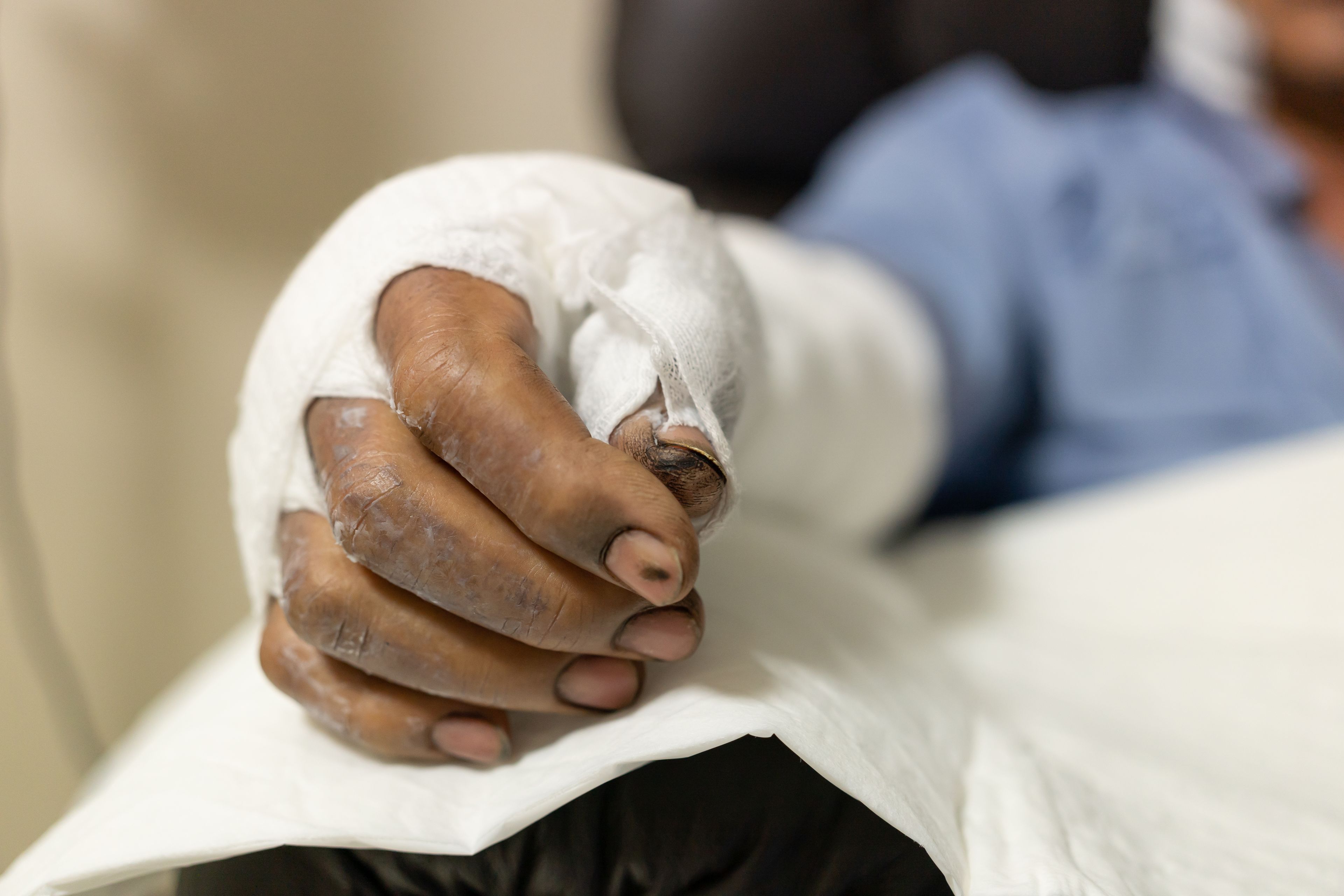
Patients
Understanding a Burn Injury
A direct guide for patients, families, and caregivers.
A burn injury can be frightening, but understanding what to expect helps you take control. This guide explains each phase—evaluation, healing, and recovery—offering clear steps and support throughout your journey.
Find a Burn Center
PHASE I: Burn Evaluation & Early Care
What is a burn injury?
A burn damages your skin—and possibly deeper tissues like fat, muscle, or bone. Burns can happen from:
How big is the burn?
Doctors use TBSA (Total Body Surface Area) to estimate size. First degree burns aren’t counted in this measure.
Can my lungs get hurt?
Yes. Breathing in smoke or chemicals can damage your lungs. This requires careful monitoring in a hospital.
What makes a burn severe?
Factors include:
Depth and size
Age of the person
Location (face, hands, feet, genitals)
Inhalation injury (smoke/fumes)
Other injuries or health issues
PHASE II: Healing the Burn
What are skin grafts and donor sites?
If your burn is deep, doctors may transplant healthy skin from another part of your body (usually thigh or back). Donor sites typically heal within two weeks.
Types of grafts:
What to expect during healing:
Pain: Surface or pressure-related, especially during dressing changes
Fatigue: Common, especially with larger burns
Itching: Normal—use moisturizers and gentle medication
When to call your care team:
If pain worsens, fever develops, or redness/pus appears, these may signal infection.
Preventing infection:
Follow wound-care instructions
Wash hands and use gloves if advised
Clean wounds gently
Use antibiotic ointments or dressings as directed
Scarring care:
If wounds heal within 14 days, scarring is less likely. For raised scars, treatments include:
Pressure garments
Silicone sheets
Massage therapy
Laser treatments
PHASE III: Long-Term Recovery, Rehabilitation, & Aftercare
What does rehabilitation involve?
Rehab may take place in hospitals, rehab centers, skilled nursing facilities, or outpatient clinics, depending on your needs.
Nutrition:
Recovering burns require more calories and protein. A dietitian can support your healing with a balanced intake.
Mental and emotional health:
Feelings of anxiety, depression, or isolation are common. Your care team can connect you with:
Counselors or psychologists
Support for PTSD, sleep issues, or substance concerns
Social workers for housing, finances, and resources
Support for family and friends:
Take care of your own needs too (meals, rest)
Coordinate visits and support
Designate one contact person to communicate with the care team